Did you know that over 85% of first-time permanent residents receive their initial PR card automatically if they submit their Canadian mailing address and photo within six months of arrival? This streamlined approach highlights the efficiency of Canada’s immigration system. But when it comes to renewing your status, the process requires careful navigation through the Canada Visa Portal – the official hub for managing permanent residency documentation.
The Permanent Residence Portal simplifies the renewal journey by centralizing everything from form submissions to document uploads. To begin, you’ll need to complete the IMM 5444 application, which serves as the foundation for verifying your eligibility. While most initial cards arrive within 180 days, renewals often involve additional checks to confirm residency obligations and updated personal details.
Urgent processing options exist for those facing travel deadlines or exceptional circumstances, though standard applications typically take several weeks. Using the official portal ensures your renewal adheres to Immigration, Refugees and Citizenship Canada (IRCC) protocols, reducing the risk of delays caused by incomplete submissions or outdated information.
Key Takeaways
- The Permanent Residence Portal is the only authorized platform for submitting renewal applications
- Form IMM 5444 must be completed accurately to verify eligibility requirements
- Different processing timelines apply for standard and urgent renewal requests
- Maintaining valid documentation helps avoid travel restrictions or service interruptions
- Photo specifications and residency verification are common sources of application delays
Introduction
Your permanent resident card acts as both identification and proof of legal status in Canada. Most cards remain valid for five years, though some initial approvals carry one-year validity. When expiration approaches within nine months – or if it’s already lapsed – initiating the card renewal process becomes critical to avoid travel disruptions or service limitations.
The Canada Visa Portal transforms what was once a paper-heavy procedure into a streamlined digital experience. Through this official platform, you can:
- Verify residency obligations
- Submit updated personal information
- Track application progress in real time
Delays often occur when applicants underestimate processing timelines or submit non-compliant photos. Starting early allows buffer time for corrections and ensures continuous proof of your permanent resident status. Renewed cards maintain the same privileges but feature updated security elements and expiration dates.
This guide demystifies each phase of the renewal process, from document preparation to final submission. You’ll learn to navigate the portal’s features confidently while meeting all Immigration, Refugees and Citizenship Canada requirements.
Understanding Your PR Card and Renewal Requirements
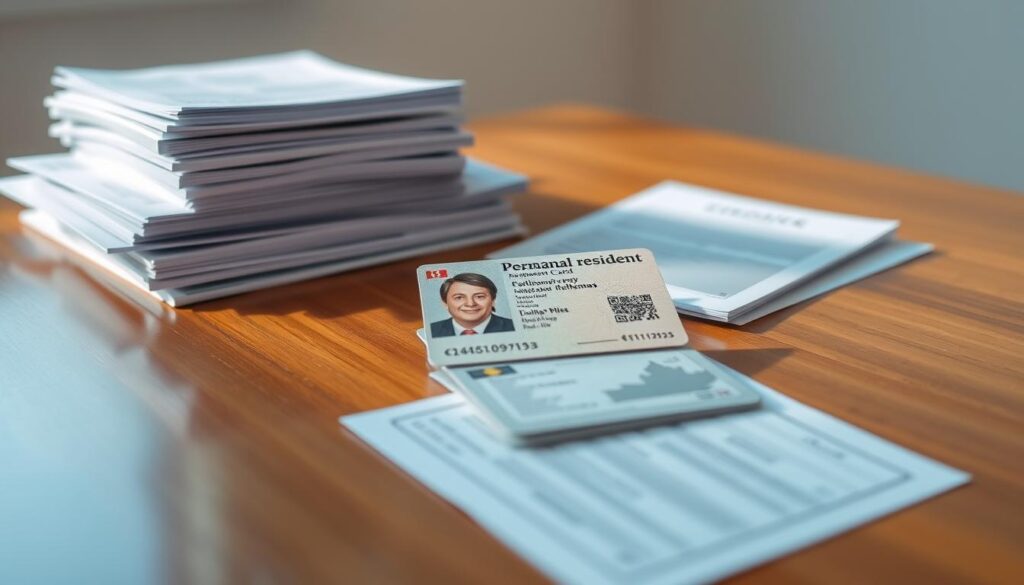
A Permanent Resident Card serves as your official proof of status in Canada. This wallet-sized document verifies your right to access healthcare, employment, and government services. While your immigration status remains valid even with an expired card, many provincial agencies require current physical documentation.
What Is a Permanent Resident Card?
This identification contains security features and biographical details matching your passport. Validity periods range from one to five years, depending on initial approval conditions. The Canada Visa Portal cross-references your entry records with residency obligations during renewal requests.
Renewal Eligibility and Required Documents
Meeting the 730-day physical presence rule within any five-year window is mandatory for standard renewals. Prepare these materials before starting your application:
- Current passport or travel document
- Two compliant photos meeting IRCC specifications
- Proof of residency like tax filings or lease agreements
| Requirement | Standard Application | Incomplete Residency |
|---|---|---|
| Physical Presence | 730+ days | Humanitarian review |
| Processing Time | 65 days average | Case-specific delays |
| Travel Ability | Unrestricted | PRTD required |
Applications lacking sufficient residency proof may qualify for exceptions under compassionate grounds. The portal automatically flags missing documentation, allowing quick corrections before final submission.
How can i renew my pr card
Understanding the optimal renewal window is crucial for maintaining valid permanent resident credentials. The Canada Visa Portal streamlines this process but requires strategic timing to avoid service gaps. Applications submitted too close to expiration risk leaving you without proof of status during processing periods.
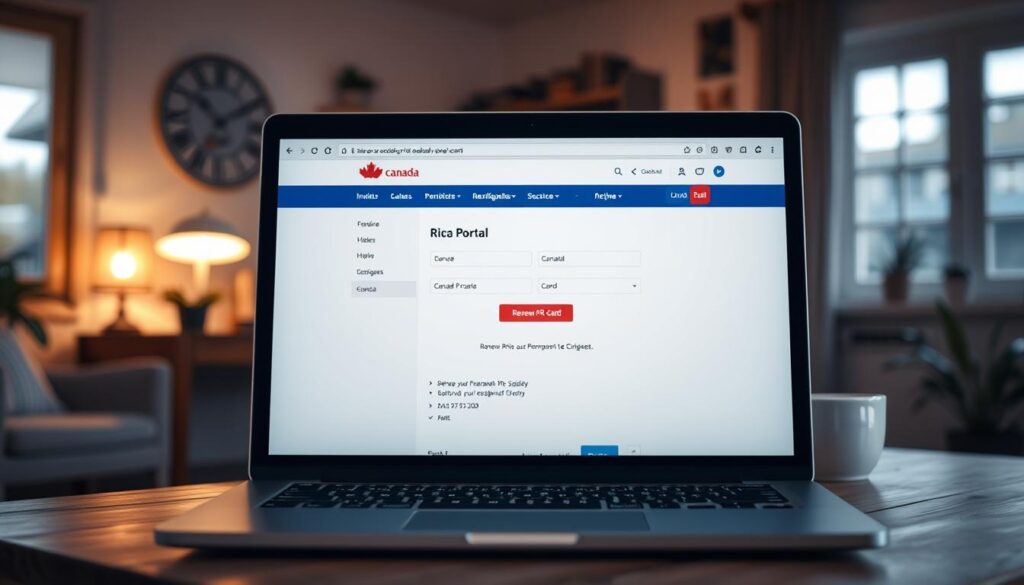
Ideal Submission Timeline
Begin the card renewal process nine months before your current document expires. This buffer accounts for IRCC’s 45-day standard processing period and potential delays. Recent data shows 23% of applications require additional documentation, extending timelines to 108 days in some cases.
Managing Expired or Near-Expiry Cards
If your card has already lapsed, the portal allows immediate submission with extra residency verification. Those traveling within six months should consider urgent processing options. Expired credentials complicate re-entry into Canada, requiring a Permanent Resident Travel Document (PRTD) for international trips.
| Scenario | Portal Action | Average Resolution |
|---|---|---|
| 6+ months validity | Track expiration date | No action needed |
| 3-9 months remaining | Initiate standard renewal | 45-65 days |
| Already expired | Submit with explanation letter | Case-specific review |
Set calendar reminders to check your card’s expiration date annually. The portal’s tracking feature sends email updates at 12-month and 9-month marks. Once submitted, use your account dashboard to monitor real-time application status and respond promptly to document requests.
Navigating the Canada Visa Portal
Mastering the Canada Visa Portal ensures your renewal application moves smoothly through Immigration, Refugees and Citizenship Canada’s systems. This digital platform combines security with user-friendly design, making it the primary channel for managing permanent residency documentation.
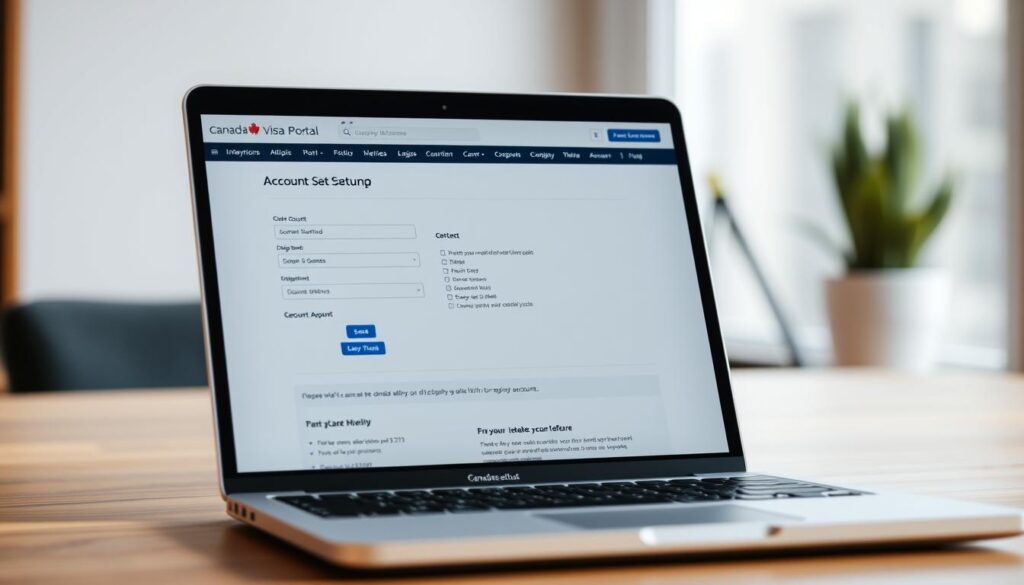
Creating and Accessing Your Account
First-time users must register with a verified email and create a password meeting IRCC’s complexity rules. The portal guides you through identity confirmation steps, including security questions and two-factor authentication options. Existing account holders log in using their GCKey or Sign-In Partner credentials.
Uploading Your Supporting Documents
The portal accepts PDF, JPEG, and PNG files under 4MB each. Organize materials like tax records or lease agreements before uploading. Use these naming conventions for clarity:
| Document Type | Required Format | Naming Example |
|---|---|---|
| Passport Scan | Smith_Passport_2024 | |
| Residency Proof | JPEG/PDF | Smith_Lease_2023-2024 |
| Photos | JPEG | Smith_Photo_MMYYYY |
Technical support helps resolve issues like incompatible file types or blurry images. The portal’s accessibility menu offers screen reader compatibility and document conversion services for users with visual impairments.
Detailed Step-by-Step Renewal Process
The Canada Visa Portal transforms complex paperwork into a guided digital experience. Its intuitive design helps you complete the renewal process efficiently while minimizing errors. Follow these critical steps to ensure your submission meets all requirements.
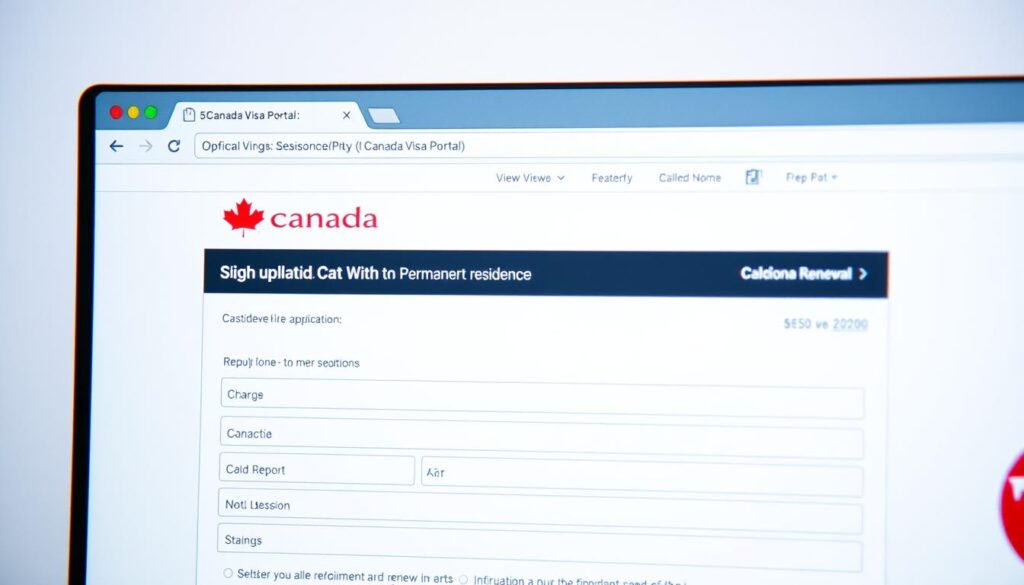
Completing the Application Form (IMM 5444)
Begin by accessing the IMM 5444 directly through the portal’s form library. The platform auto-fills recurring details like your Unique Client Identifier (UCI) to save time. Pay close attention to these sections:
- Residency Calculator: Verify your 730-day physical presence
- Travel History: List all trips outside Canada since becoming a permanent resident
- Address Updates: Confirm current residential information matches supporting documents
The portal highlights incomplete fields in red and provides tooltips for confusing sections. Electronic signatures require matching the name exactly as shown on your passport.
Submitting Payment and Fee Receipt
While the portal hosts the application, payment occurs through IRCC’s secure payment gateway. Follow this sequence:
| Step | Action | Critical Details |
|---|---|---|
| 1 | Initiate payment | Select “PR Card Renewal – $50 CAD” option |
| 2 | Download receipt | PDF must show transaction ID & date |
| 3 | Upload proof | Attach to “Fee Receipt” section in portal |
Applications without valid receipts face immediate rejection. Save both digital and physical copies of your payment confirmation for future reference.
Review all entries using the portal’s preview function before final submission. Double-check dates against passport stamps and residency evidence. Once satisfied, click “Submit” to trigger official processing.
Handling Special Circumstances
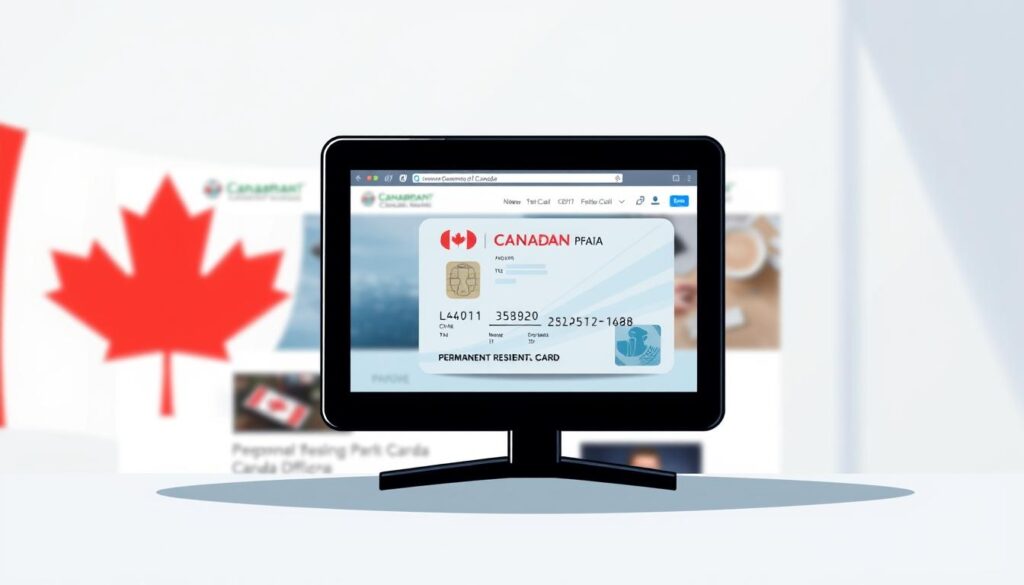
Life’s unpredictable nature sometimes demands adjustments to official documentation. The Canada Visa Portal accommodates various scenarios requiring card updates beyond standard renewals. Whether addressing administrative errors or physical damage, specific protocols ensure your status remains uninterrupted.
Addressing Errors in Permanent Resident Cards
Immigration officials occasionally make mistakes during card production. If you receive a new card with incorrect details, request free reissuance within 60 days through the portal’s “Report Error” feature. Essential documentation includes:
- Original card with errors
- Scanned copies of supporting identity documents
- Written explanation of discrepancies
Damaged cards require immediate destruction before replacement. Upload a photo showing the cut-through security chip as proof of disposal. The portal’s application tracker updates within 48 hours of submission confirmation.
Replacement Protocols for Security Issues
Lost or stolen cards pose identity risks. The portal’s emergency replacement process involves:
| Scenario | Required Action | Portal Section |
|---|---|---|
| Theft | Upload police report | Security Incidents |
| Damage | Provide destruction evidence | Card Condition |
| Name change | Submit legal name update documents | Personal Information |
Replacement fees vary based on circumstances. While error corrections are free, lost card replacements cost $50 CAD. Always report security breaches immediately through the portal’s priority channel to prevent misuse.
Renewing Your PR Card When Outside Canada
Travel plans often require flexibility, especially when managing permanent residency obligations from abroad. The Canada Visa Portal doesn’t process renewal applications submitted outside Canada, making advance planning essential. If your card expires while you’re overseas, you’ll need alternative documentation to maintain travel capabilities.
Obtaining a Permanent Resident Travel Document (PRTD)
This single-entry visa allows return to Canada when your PR card isn’t valid. Apply through Canadian visa offices or embassies in your current country. Required materials include:
- Completed IMM 5627 application form
- Proof of residency compliance (730+ days in Canada)
- Passport-style photos meeting IRCC standards
“PRTD applications typically process within 3 weeks, but always verify current timelines with your local visa office.”
| Entry Method | Required Documents | Processing Time | Validity |
|---|---|---|---|
| Commercial Transport | PRTD or valid PR card | 15-21 business days | Single entry |
| Private Vehicle | Passport + COPR* | Immediate | At officer’s discretion |
*Confirmation of Permanent Residence (COPR) must accompany other identity proofs. Border agents may request additional residency verification even when arriving by car.
Coordinate PRTD applications with pending renewals by noting your application number in supporting documents. Once back in Canada, complete the standard renewal process through the portal using your updated address.
Urgent Processing and Travel Considerations
Time-sensitive situations demand strategic use of the Canada Visa Portal’s priority channels. While standard processing averages 45-65 days, urgent requests require documented proof of imminent travel within three months. Common qualifying scenarios include critical employment obligations, medical emergencies, or compassionate visits to gravely ill relatives.
Qualifying for Expedited Review
To request faster processing, upload verifiable evidence through the portal’s emergency submission section. Acceptable documentation includes:
- Employer letters confirming start dates
- Medical certificates from licensed physicians
- Death certificates or funeral notices
IRCC processes 89% of urgent requests within 21 days but cautions applicants: “Expedited processing doesn’t guarantee card issuance before travel dates.” Always maintain backup plans like applying for a Permanent Resident Travel Document (PRTD) abroad.
Managing Travel With Expired Credentials
An expired card complicates international trips but doesn’t revoke your status. Consider these options when travel becomes unavoidable:
| Situation | Solution | Processing Time |
|---|---|---|
| Card expired mid-trip | Apply for PRTD locally | 14-21 business days |
| Urgent renewal pending | Carry portal submission receipt | N/A (Proof of application) |
“Always carry your Confirmation of Permanent Residence (COPR) when crossing borders by land – it remains valid indefinitely.”
Monitor your portal dashboard daily if awaiting urgent processing. Delays often occur when supporting documents lack dates or official letterheads. Submit corrections immediately through the document replacement feature.
Tips for Ensuring Complete and Accurate Documentation
Proper documentation forms the backbone of any successful application through the Canada Visa Portal. The platform’s structured requirements eliminate guesswork while ensuring all materials meet Immigration, Refugees and Citizenship Canada standards. Begin by downloading the IMM 5644 checklist directly from your portal account – this interactive tool updates automatically based on your residency history and personal circumstances.
Checklist for a Successful Application
Two critical elements demand precision: photo specifications and proof of residency. Recent rejections often trace back to non-compliant images. Follow these guidelines:
| Photo Requirement | Technical Spec | Common Errors |
|---|---|---|
| Dimensions | 50mm x 70mm | Incorrect head size |
| Background | Pure white | Shadows or patterns |
| Recency | Within 6 months | Outdated appearance |
Gather at least two residency proofs spanning five years. Bank statements and utility bills work best when showing consistent Canadian addresses. Pay stubs and tax assessments should cover multiple calendar years.
Make sure scanned documents display crisp text without glare. The portal rejects blurry files or those with cropped edges. Use its preview feature to verify legibility before final submission. IRCC reports 34% of applications require resubmissions due to poor image quality.
Organize files using the portal’s recommended naming convention: LastName_DocType_Year. This prevents confusion during officer reviews. Double-check that all pages of multi-sheet documents upload completely – partial submissions cause unnecessary delays.
Processing Times and What to Expect
Understanding timelines for permanent resident documentation updates helps manage expectations. Current data shows most applications complete within 45 days through the Canada Visa Portal, though complex cases may extend to 108 days. These processing times reflect historical averages from Immigration, Refugees and Citizenship Canada (IRCC).
Average Processing Duration
Standard renewals typically finalize in 6-7 weeks when submitted with complete documentation. Recent system upgrades have reduced delays, but seasonal application spikes still cause fluctuations. For the latest updates, consult the recent IRCC processing times analysis.
Key Influencing Factors
Three elements commonly affect timelines:
Application volume: Peak periods (January-March) often add 2-3 weeks to standard durations. Documentation quality: Missing proofs or non-compliant photos trigger review delays. Verification needs: Cases requiring manual residency confirmation take longer.
Submitting error-free materials during off-peak months optimizes speed. Monitor your portal dashboard for real-time status changes and prepare for potential follow-up requests.



